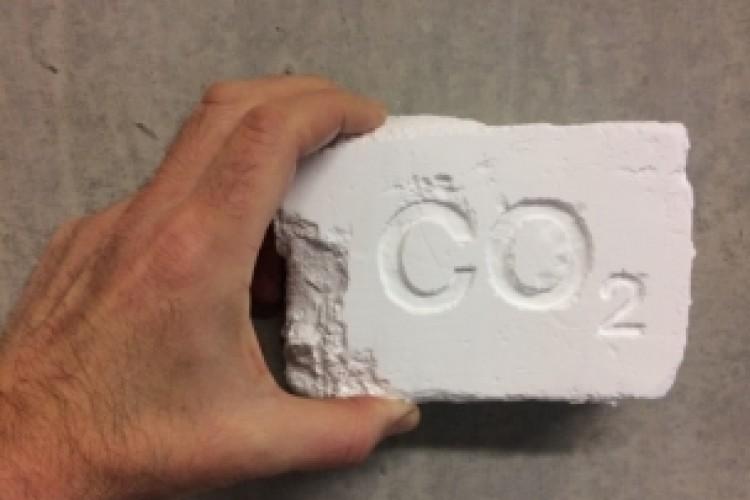Cambridge Carbon Capture says that after years of development it has proven its technology at laboratory scale. It is now in talks to scale it up.
Its patented CO2LOC technology captures CO2 and converts it into magnesium carbonate to create a substance that can be used either as a direct replacement for gypsum or as a filler in other construction products.
The by-product is strong and lightweight, extremely fire and water resistant, and has many potential applications across the construction industry, the scientists say. Its fire-resistant property means that even a thin wall of the material can provide superior fire protection for buildings, and it can also be used as an eco-friendly alternative to concrete fillers, blocks, tiles and plasterboard, it is claimed.
The science
The technology works via a two stage mineralisation process, which involves the reaction of magnesium hydroxide (MgOH2) with CO2 to produce magnesium carbonate (MgCO3). The magnesium carbonate is filtered out and sets to form a rock-like substance, permanently storing the sequestered carbon in a solid form.

Cambridge Carbon Capture hopes that its processes will help the construction industry to become carbon neutral.
Chief executive Michael Evans said: “Each year, the world produces 40 billion tonnes of CO2. The current goal is for this to be reduced to zero by 2050 – but, we are fast running out of time, as the detrimental effects of climate change become more and more apparent every year. The construction sector is a big contributor to CO2 emissions, and we want to help the industry become a lot cleaner.
“Cambridge Carbon Capture offers a unique solution because it allows industry to continue to operate, but any carbon emitted can be captured and converted into a useful by-product which can either be used to displace other more carbon intensive construction materials, or can be sold on for a profit. For example, a cement works could capture the CO2 emitted from the cement plant and, using our process, can transform the captured CO2 into a filler in their ready-mix concrete – it really is that versatile. The technology takes the concept of a circular economy to a whole new level and the possibilities are endless.
“Now we’ve proven the technology in the laboratory, we aim to prove it on an industrial scale and, for that, we need the construction sector to get on board and adopt some of the materials we’re developing, think innovatively and try something new. We’re currently in discussions with a range of organisations to establish partnerships for use of the technology and are seeking investment to help us demonstrate our technology in real world applications. We are also developing a larger demonstrator, housed in a shipping container, which will enable us to trial our technology at all kinds of industrial sites, such as cement works, steel mills and power stations.”
Cambridge Carbon Capture has developed the technology with the support of a number of InnovateUK grants enabling it to work with WRK, the University of Cambridge and Sheffield University to demonstrate the technology at a lab scale. The company has received two further Innovate UK grants to develop the containerised demonstrator.
Got a story? Email news@theconstructionindex.co.uk



